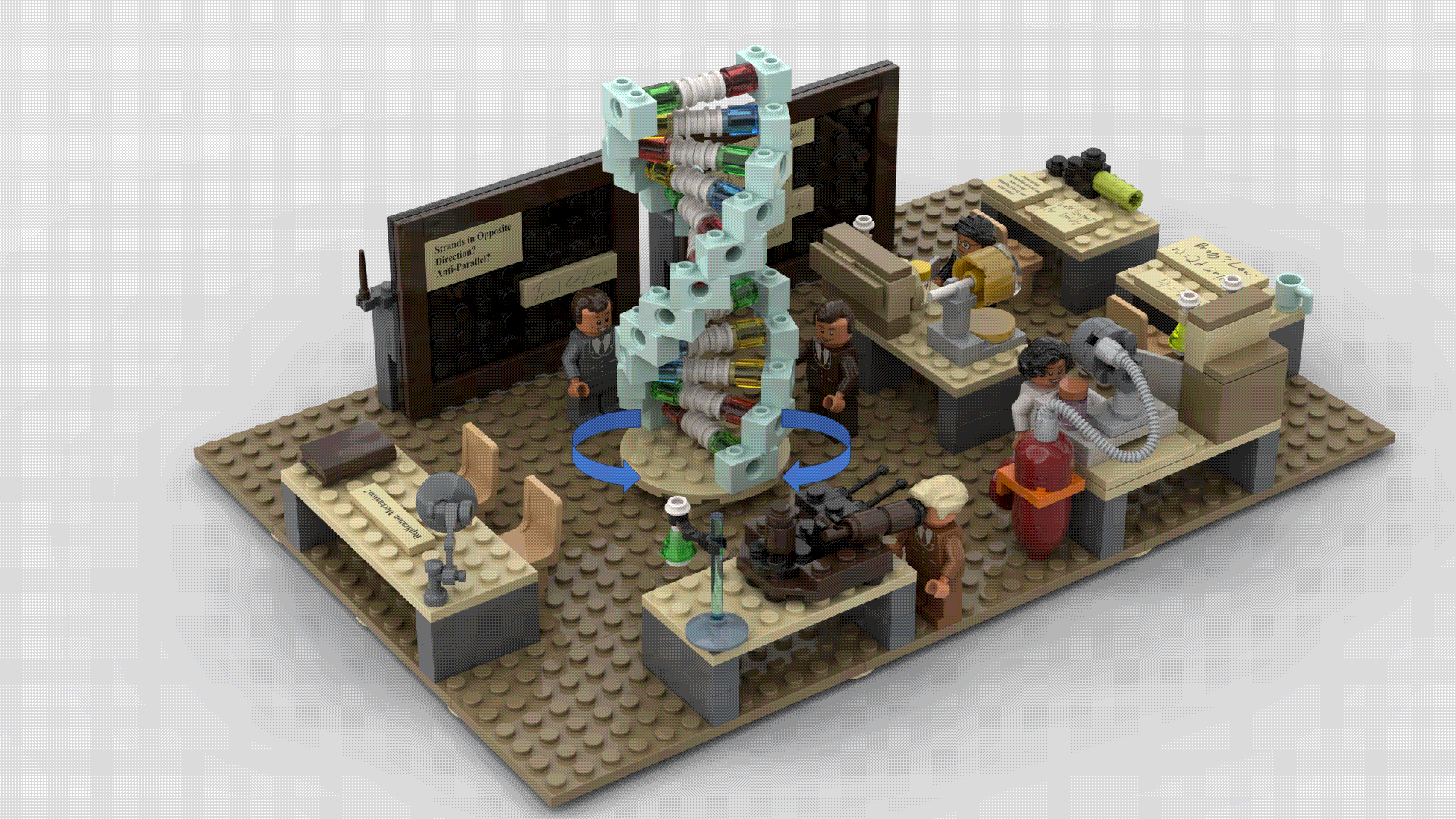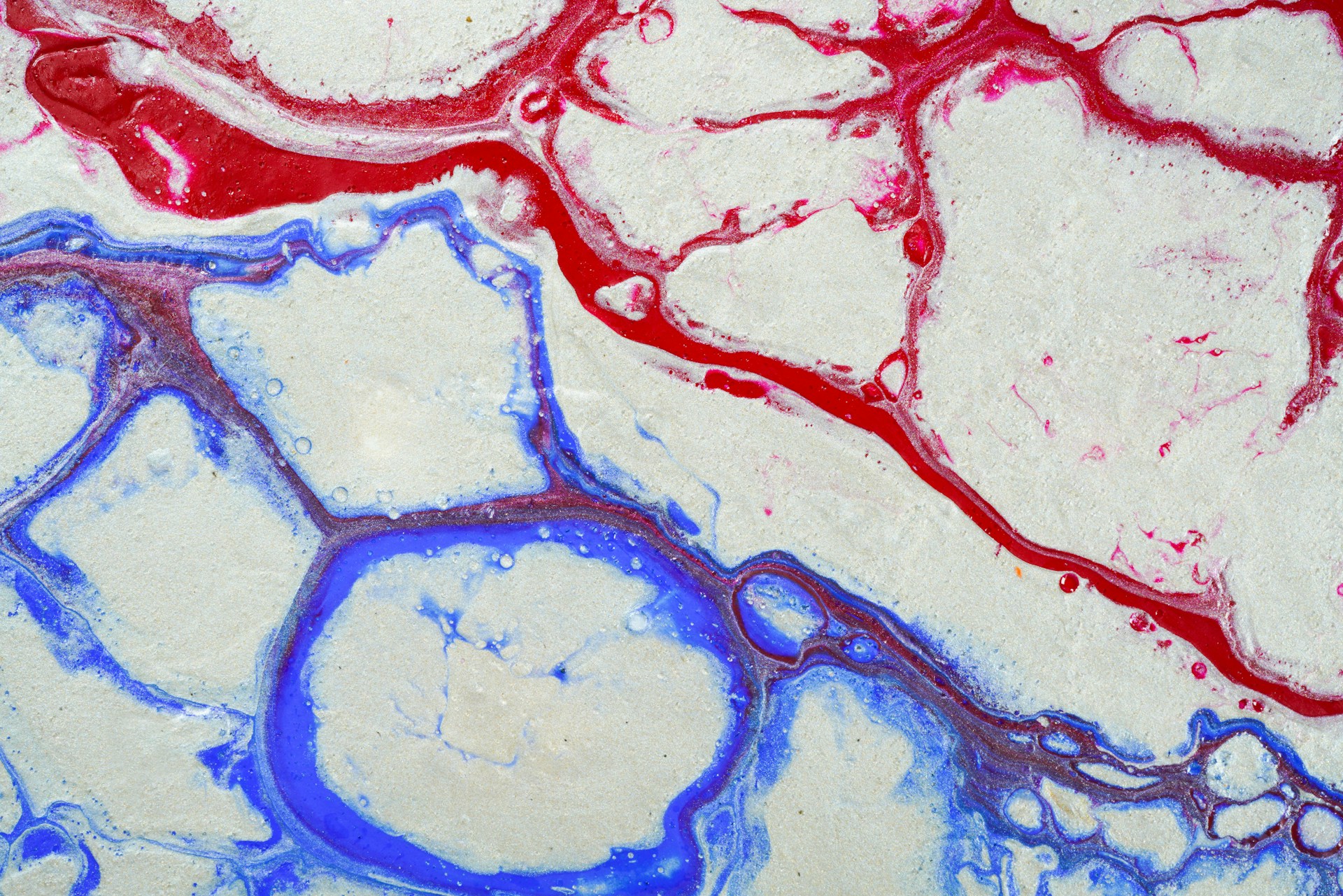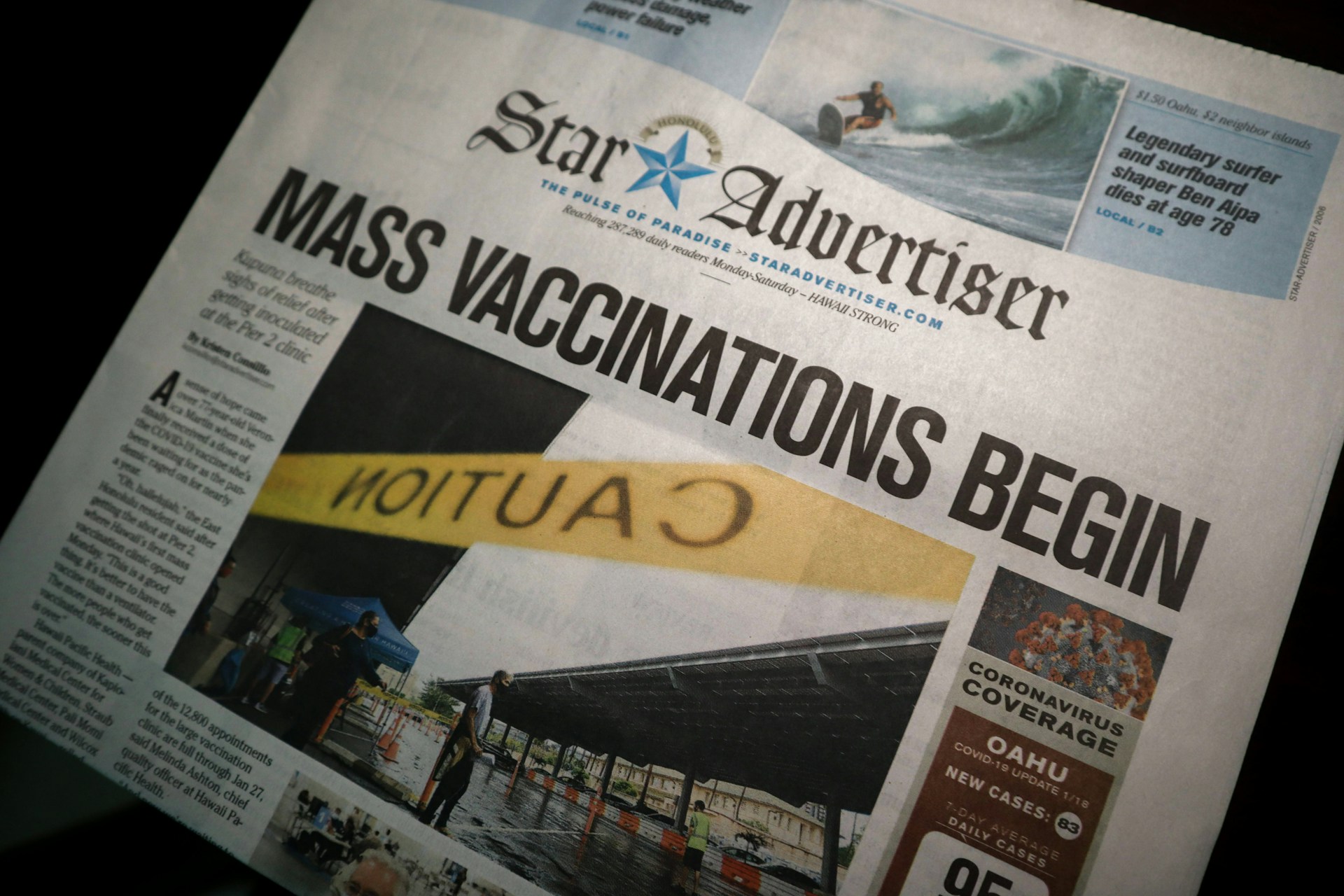My brother and I grew up with LEGOs. Like millions of others, we built cars, spaceships, and medieval castles from tiny building blocks the size of our fingertips. Conjuring structures of massive size from something so small were not just profound. It was life changing.
Such was also the case for our interviewee, Daniel Khosravinia. He recently completed his Masters in Bioengineering at the Imperial College of London. Now that he has graduated, he is eager to jump into the world of entrepreneurship by delving into fashion while preserving our planet. What better way to be an entrepreneur than by pitching a new LEGO set?
Amid his intense research, he has found time to continue indulging his love of LEGOs through LEGO Ideas. There, he is campaigning for a new LEGO set that especially speaks to the life sciences. His new set would home in on a critical juncture in genetics research: discovering the structure of DNA.
It was amazing to find a LEGO enthusiast working in the life sciences. When I heard about Daniel’s LEGO DNA idea on LinkedIn, I couldn’t turn down the chance to interview him. Read on to see how Daniel marries art with science to cultivate LEGOs into an effective medium for communicating science.
The Interview
Your Love of LEGOs
PN: A lot of us, me included, have grown up playing with LEGOs. What got you into LEGO, and what’s your favourite LEGO set?
DK: I’ve played with LEGOs since I was in preschool. My mom bought me the blue knight from the Lego Knights Kingdom. I was hooked on that magnificent toy, and I’ve been a lifelong LEGO fan since. Everyone who’s played with LEGOs will tell you that they loved building and creating new things. The thrill of making something from tiny blocks was something I and millions of others indulged in.
I’ve loved every set I’ve built. Each set, like Lego Technic, comes with different building techniques that make every set a unique experience. But of all the sets I’ve ever built, the LEGO Star Wars Imperial Star Destroyer is my favourite. I’m a huge Star Wars fan, but I also love the paradox of the set design being so large, yet simple. It’s beautiful to behold, and you know you’re going to have fun when the instruction booklet is heavier than biochemistry textbooks!
LEGO in Life Sciences
PN: Speaking of biochemistry, you’re proposing a new LEGO set inspired by biochemistry. Where are you proposing the set, and what inspired you to propose the idea?
DK: I’ve always wanted to find a science-based LEGO set in all the years I’ve built them. Yet the only science-based LEGO sets are space-related. The rockets they offer begin to look the same after you build a few of them. That’s when I encountered the LEGO Ideas platform. The site provides a place for LEGO lovers to propose new sets that people of all ages can enjoy. When I learned about the platform, I decided to make the first major non-space science set, specifically something related to biology and chemistry!
PN: So, I hear that your big idea is related to genetics and is tied to history too. How did you design it?
DK: The story behind DNA’s discovery is one played out in schools across the world. Even so, many people still don’t know the effort it took to depict a DNA model. That’s why I wanted to make it more accessible to my scientifically accurate LEGO DNA model (Figure 1). I took great care to ensure the scientific and historical accuracy of the LEGO set:
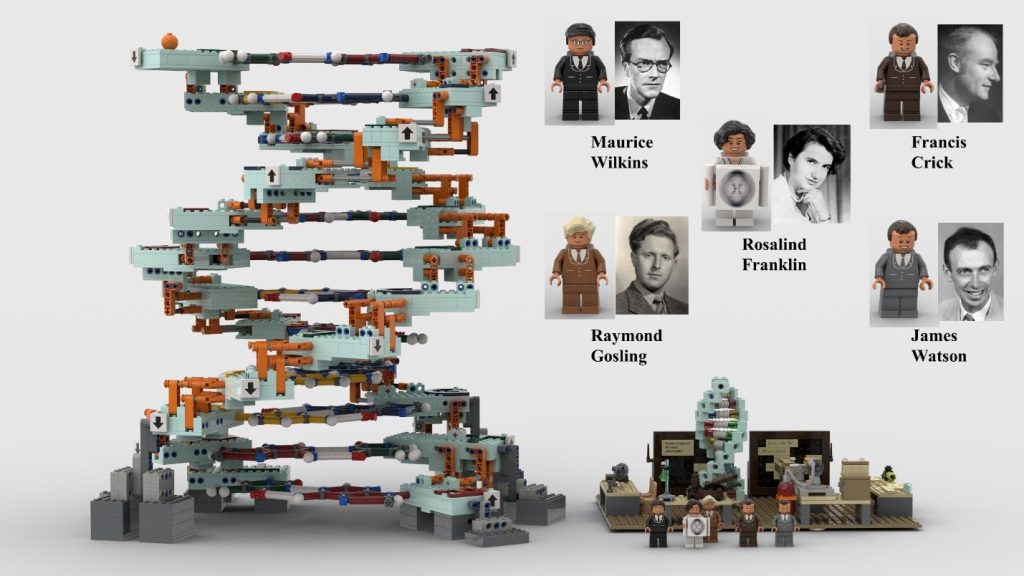
- Scientific: If the science isn’t accurate, then there isn’t a point in conjuring this set. The DNA model will include all the structural intricacies that we know and love. I took great care to ensuring scientific accuracy, such as the DNA’s antiparallel strands, distinguishing the individual nucleotides (Figure 3), and even angling the turns of the DNA helix correctly (Figure 2).
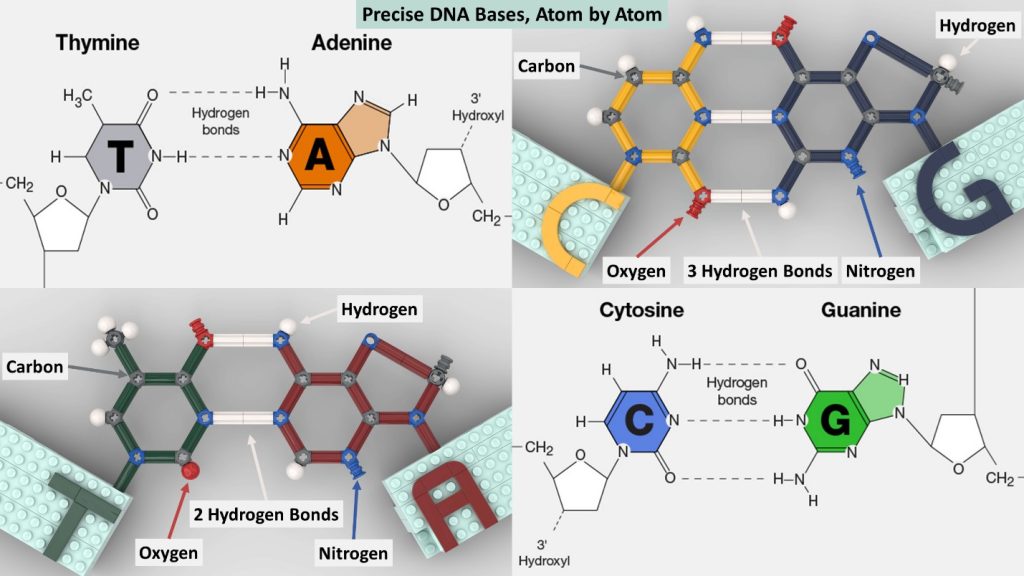
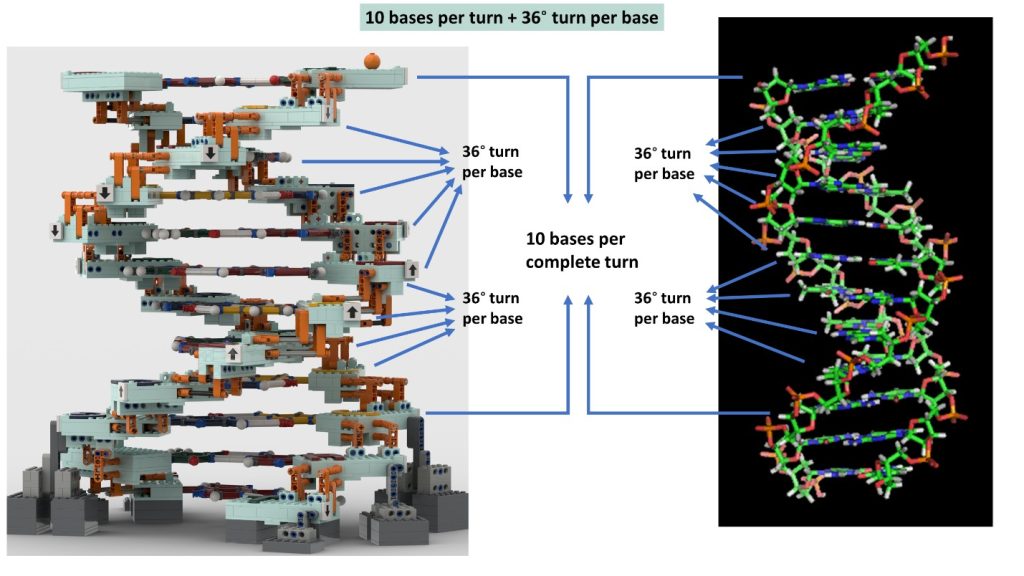
- Historical: I also wanted people to know that this story features humans like you and me. They’re not just scientists from another world; they live among us and want to help us live fulfilling lives. My LEGO set integrates as many aspects of the people who discovered DNA as possible. From the X-ray fibre diffraction camera to the blackboards at King’s College, I made sure that builders could dive right into the world of genetics (Figure 4).
Making sure I got both aspects just right was a challenge. I especially had to keep the major and minor grooves just right so that the DNA model could remain stable once built.
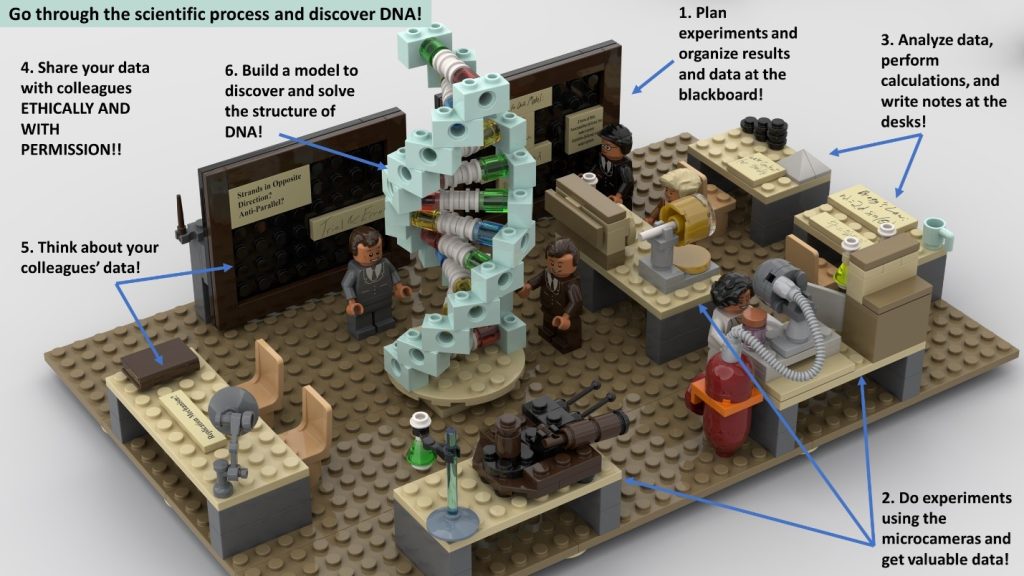
PN: You have the pick of the lot when it comes to developing a Lego set based on biology. What inspired you to pick the story of DNA when pitching your LEGO idea?
DK: First off, I wanted to give people a fun building experience. What better way to learn about science than to experience it with your hands? That’s what lab research is all about, after all! Second, my high school biology class introduced Watson and Crick’s names in DNA discovery, but not Rosalind Franklin despite how instrumental she was for conceiving the structure! Ultimately, I want this LEGO set to honour Rosalind Franklin’s legacy and to promote science to people of all ages.
PN: It sounds like a lot of people would benefit from playing with your LEGO set!
DK: Absolutely! I strove to make the LEGO DNA set as accessible as possible. Teachers across the education system can use it as a fun teaching aid all throughout grade school. Lego DNA will help students learn the structure of DNA, as well as the history behind one of the greatest scientific discoveries. Due to the structure of the lab, students who play with the set would then have a more complete picture of how science is performed. They can experience going from hypothesis, to experiments, data analysis, and model building (Figure 4). This, in turn, will help students go beyond accepting things as they are, with the materials they learned at school, and understand how discoveries are made and facts established.
For the scientists, anyone who wants to tap into their nostalgia or their love for LEGO will also love the Easter Eggs I introduced in the set (Try to look for Signer’s DNA or translate the DNA code to amino acids!). Any LEGO enthusiast would also love the challenge of putting the double helical DNA shape together, base by base, groove by groove. The set also brings the laboratory to the general public. Often times, we think of labs as shut-off institutions that we have to stay away from. While such protocols ensure our safety, it can also leave the public feeling detached from research. So put together, I think anyone would greatly benefit from playing with my LEGO set.
Science Communication through Marketing
PN: As you developed your idea, you must have thought about how you would pitch your idea to LEGO. How did you start receiving votes for your idea of LEGO Ideas?
DK: Getting the votes I needed was the longest part of the journey. I did a lot of networking to start by telling everyone I met about my project. Many of the students and staff I spoke to at Imperial College London liked it, and many of them promoted my work on social media. LEGO DNA got into several newspapers and newsletters, including Imperial College’s Student Newspaper, Felix, Issue 1832, and in the Bioengineering Society and Student Union newsletters.
After I got started with the likes, the LEGO Ideas website did the rest. They must have liked my idea too; LEGO DNA took first place in popularity on the website for a whole month. After that, LEGO DNA stayed on the front page for another three months! It even received a staff pick by the site’s editors!
If you want to continue the momentum and help with my journey to make my LEGO Idea a reality, you can click on this link and vote for my submission! You just sign up for a free LEGO Ideas account and you’re on your way.
PN: Congratulations on coming up with such a cool idea! Where do you see yourself after you complete your studies at Imperial College London? Where does LEGO fit into that future?
DK: I recently completed by Masters in Bioengineering at Imperial, and I am currently starting my own company, where I am making an environmentally sustainable textile for the fashion industry. My company aims to benefit both fashion and the planet! So, my startup is my focus for now!
I do have some other ideas for LEGO designs, so hopefully I’ll make those too when I have the time! Making Lego DNA, however, helped me gain a few awesome skills, like CAD, making a video trailer, marketing, networking, and communicating project details, all of which will help me in my startup!
Author
-

Paul Naphtali is a seasoned online marketing consultant. He brings to the table three years of online marketing and copywriting experience within the life sciences industry. His MSc and PhD experience also provides him with the acumen to understand complex literature and translate it to any audience. This way, he can fulfill his passion for sharing the beauty of biomedical research and inspiring action from his readers.
View all posts
